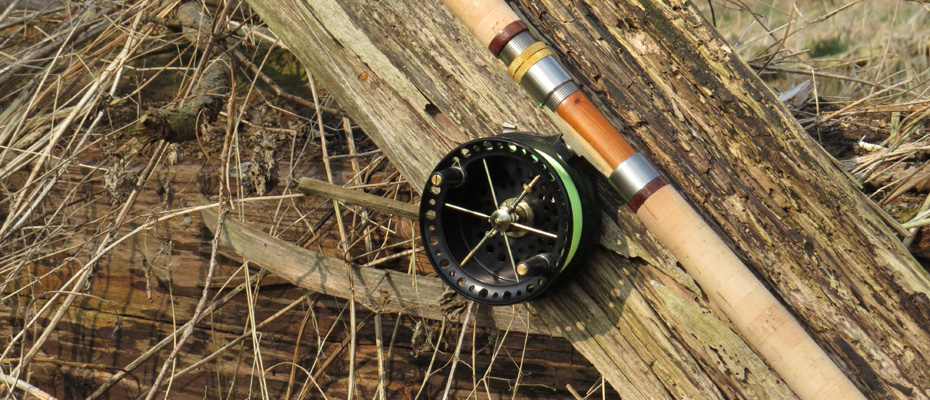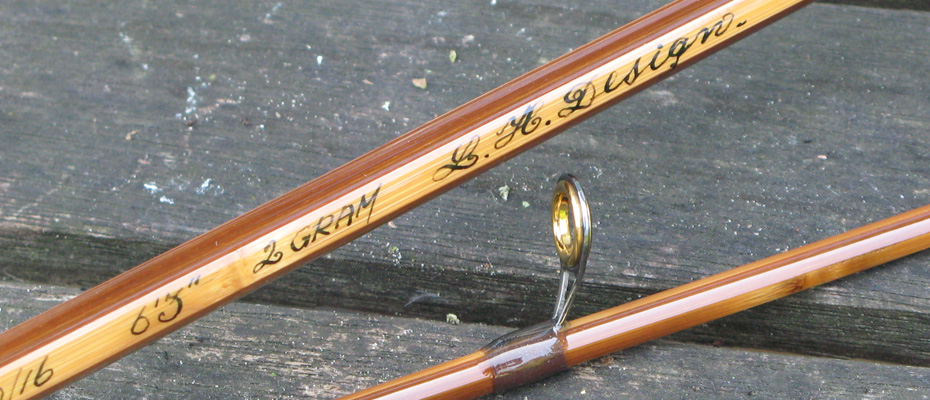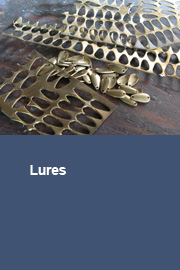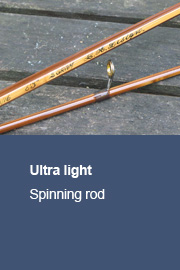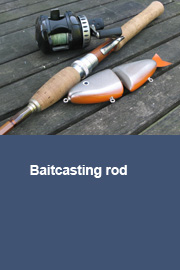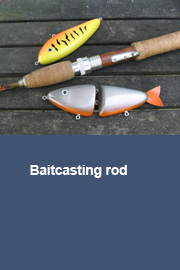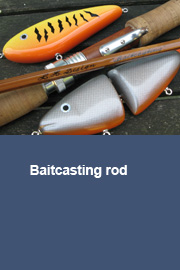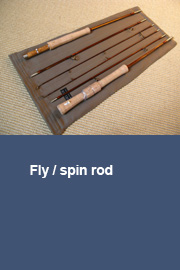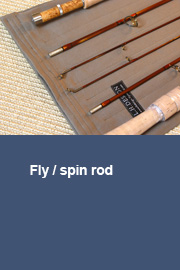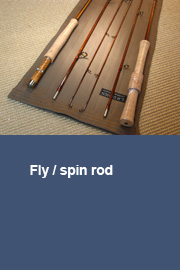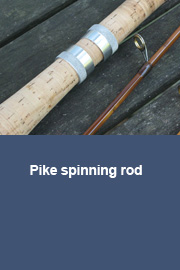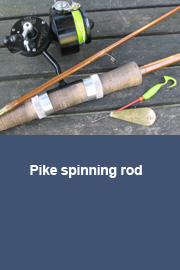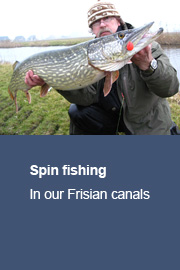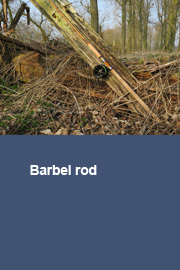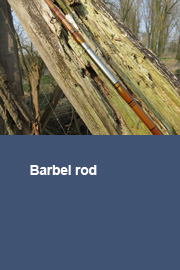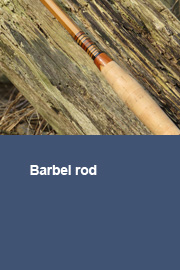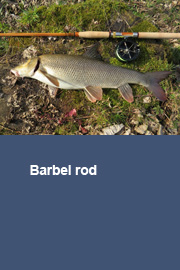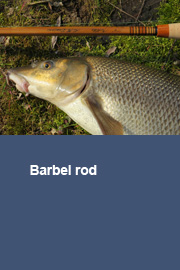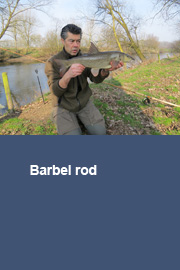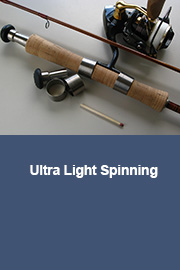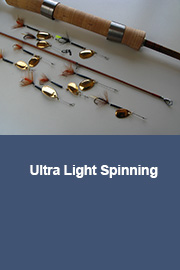Reports
The L.H. Design Programme of Spinning and Baitcasting:
- Report 7 (April 2024)
- Report 6 (August 2020)
- Report 5 (April 2015)
- Report 4 (July 2008)
- Report 3 (July 2008)
- Report 2 (June 2008)
- Report 1 (June 2008)
Report 7 - On Quadrate Rods
During the 45 years of my rod building, there were many challenges and I'm still learning every day. Making bamboo rods is a passion; there are so many details and questions and most of these remain points of interest right up to the present day.
For example, I changed my varnishing technique several times and new and improved glues influenced the weight and performance of my rods in observable ways.
I built a large number of bamboo rods during my lifetime and most of these were fly rods but, in addition, carp and barbel rods and not least also spinning rods, where my focus was light and fast-actioned models especially for sea trout fishing with ultralight lures.
Over the last three years, I felt the need for a new challenge and in reading Martin J Keane's book "Classic Rods and Rodmakers". I found myself intrigued by quadrate rods or "quads" as they're often referred to. At first, I gained the impression that building quads wouldn't be that different to traditional hexagonal rods, nor that the fishing experience would be that different. However, as I delved into it, it became clear that differences were indeed to be expected although I needed to learn exactly what these differences would be!
The man and ultimately the family behind the building of quads was Eustice William (Bill) Edwards and then later his sons Bill and Gene. Eustice lived between 1875 and 1931 and Marty Keane observed, "When he died, the life of one of America's most creative rod masters came to an end."
"He also left some exquisite treasures, for Eustice Edwards did some things with rods that have never been seen, before or after..."
His sons Bill and Gene carried on the tradition of rod building and Bill further developed the quadrate rods. Martin J Keane said of these rods, "I don't think the angling world would have been the same without the quad rods. Quads give the angler the opportunity for a change of pace, a new dimension in fly fishing."
"Don't draw any conclusions about an Edwards quad rod until you have fished one under normal conditions. The quad is mighty different when working under the weight of a properly fitted line. It is an amazing instrument with greater power and considerably more delicacy than most anglers would imagine." Marty Keane knew a thing or two about bamboo rods and I was captivated by his regard for these creations.
I decided to start making these rods and the first challenge was the planing form; it is very different to that needed for hexagonal rods in that you need two grooves to plane the strips which have unequal sides. The cross sections of the strips of hex rods are equilateral triangles whereas the quad strips are isosceles triangles and this is the main difference in building the rods.
Together with a friend, we made the planing forms which wasn't too difficult but required the investment of considerable time and effort.
Planing the strips was the next challenge! The 45 degree angles are razor sharp and initially my fingers looked like they'd been cut with razor blades. After this experience, I used rubber gloves which I now also use when planing strips for hex rods, a highly recommended step!
I decided to start with a light spinning rod, the idea being to convert a favourite taper to quad. The building of the rod brought no exceptional difficulty and after planing four strips, it was all systems go!
The quad blank was surprisingly different to the equivalent hex rod upon which it was based. The power of the quad was discernibly greater and it was noticeably stiffer.
This was also the case with the other hex tapers I "translated" and I decided to develop a range of 12 quad fly and spinning rods based on my best tapers. In my opinion, the quads brought an advantage to all tapers and were also superior to the five strip (pent) rods I'd fished.
My conclusions? Six strip rods are simple and if properly made, of top quality. Five strip rods are heavier with no apparent advantage. And the quad is stiffer and lighter with extra power!
Maybe I could make you a quad or two!

Leen & Ella Huisman, Tjerkwerd, April 2024
To top
Report 6 - A forgotten way of fishing
During the sixties and seventies of the twentieth century a way of fishing was promoted by a famous Dutch angling expert and publisher in The Netherlands named Jan Schreiner. He actually introduced the art of Ultra Light Spinning to many Dutch anglers. Ultra light spinning was not well known previously and it involved really something new.
The rods that were used were mainly the Pezon er Michel Ultra Light spinning rods, no other rods were available at that time. Schreiner developed his own line of glass rods during the late decades of the twentieth century.
I will focus of course in this report on bamboo rods because it is my passion and profession to design and build these. For a number of reasons the knowledge about this fishing method disappeared and only very few fishermen are today still familiar with it.
Some two years ago my friend from The Hague, Arthur van de Meyden, reminded me of the art of Ultra Light Spinning. And it really was a revelation to me!! I have been practising the use of spinning rods from my childhood with great succes in fishing for pike, perch, walleye, Salmon, Sea Trout and trout. But I had never any experience with UL spinning.
In UL spinning all tackle is downsized: First the rod, then the reel, also the lures and of course the lines used. This involves a total different feeling and focus. For instance: Once started this way of fishing you will be able to catch... RUDD!!! And these IN NUMBERS!!! Also small perch will fight for your minispinners! And really I can confirm that the number of fish you will catch will be astonishing.
For this fishing I developed of course immediately a specific rod with a lenght of 6 Feet 3 inch. The rod has Ultra Light guides and all titanium grade 2 hardware (reel rings, cone and winding check). It is an assymetrical rod and Ella, my wife and business partner makes the rod bags, containing an extra bamboo strip for tip protection. The rod has proved to be the perfect tool for this trade!
But there are some points to consider: The thinnest (braid) lines available have to be used in order to be able to cast the UL lures that mostly have a weight of some 2 grams!! Further you need to do some research on UL lures, especially spinners. It is a challenge to make these yourself and fortunately you can find different types of mini spinner blades on the web. And also you will find that UL spinning is a very sensitive way of fishing: you need to develop the feeling for the right speed. This is a key point!
To balance the rod the lightest fixed spool reel is needed, a spinning reel of 161 grams is available today, it is a High End reel and the balance with the rod is simply perfect. I can honestly say that this type of fishing will be addictive: It is hard to stop when having contact with a fish at almost every cast!!!!! Certainly this report will trigger some fishermen to pay attention to this forgotten way of fishing.
We would be pleased to inform you more extensively about the rod and its availability, terms of delivery and price. We add some pictures too, giving you an impression about the atmosphere of the fishing described. ENJOY!

Leen & Ella Huisman, Tjerkwerd, August 2020
To top
Report 5
During last winter I designed and built a rod especially for barbel fishing in slow flowing rivers, for a Dutch customer.
In recent years barbel have become more and more abundant in the Netherlands and many fishermen are now focused on fishing for them.
The rod I designed had to be about 11.6 Ft, with a suppple action , yet powerful enough to handle fish up to 80 cm.
I started to analyse the light carp rods I have built over the past 30 years and finally I found that two of these rods could do the job; but only after making some small modifications to give them a little more of a "Full Flex" action.
The rod was made to my customers specifications in two pieces. To keep the weight down I used lightweight guides, and this has proven to be the right choice.
When finished the rod was entirely acceptable in weight and sensitive but with the power to comfortably handle the large fis it was designed for.
I fitted the rod with a full titanium downlocking reel seat with two bronze locking nuts that were guilded with 24 K gold. The spacer and the winding check were made from an ancient piece of yew.
This rod was first used last February and caught a magnificent barbel, on its first outing. The pictures show the rod and the fish caught during that first trip and I'm convinced that many fish will follow (and rods!)
The whole exercise prompted me to give it a try too and hopefully I will land my first barbel sometime this year using the second rod of this type that I'm building right now for myself.

Leen Huisman, Tjerkwerd, 7 April 2015
To top
Report 4
And now about my spinning rod for pike.
I began pike fishing in 1950 together with my father (who passed away in 2010 at the age of 95).
We used live baitfish and every pike was killed and eaten at that time, with no exception. The rods were long poles of natural bamboo; many times no reel was used at all. The waters we fished were small, actually ditches in the so called "polders," which are artificially dry areas (which is most of the Netherlands). The pike were roughly pulled out of the water and killed.
Since then, the total outlook on fishing has changed. In the 1950s, I could not have imagined that I would ever be a rodbuilder, although my interest in split-bamboo fishing rods was already present.
Ninety percent of my fishing is flyfishing, also when fishing for pike. Despite that, I never quit fishing for pike with spinning lures which are, by far, the most effective lures in our area. Between about 1970 and 2000, I built various spinning rods and most of these are still in use by me and our two sons.
In 2003 while restoring some old rods I put together two pieces (tip and butt) of two different bamboo rods and found my final spinning rod this way. Simply by coincidence!!! The rod was then modified a little and the length reduced to 7 ft. It casts weights of between 7 and 15 grams (1/4 to 1/2 ounce) effortlessly. This rod has landed many pike over 1 meter (39 inches) long. It is simply the best spinning rod I have ever seen for the purpose of pike fishing with spinning lures in relatively small waters.
The guides are also of a lined type and the weight is 154 grams (a little less than 5 ounces). The grip is 26 cm (about 10 inches) and has two sliding rings (pictures). Truly the one and only, I recommend it!!

Leen Huisman, Tjerkwerd, 14 July 2008
To top
Report 3
One of my friends who had cast the spinning rod described in Report 1 did a strange experiment: He put a fly reel on it with a 4 wt. line.
The result was really interesting: the rod cast almost the full line. When I heard of this, I tried it myself and decided immediately to build something to be put in a rucksack.
I built this rod as a 4 piece! With one spinning tip and one fly-fishing tip and with one spinning grip and one flyrod grip. I wished I could put some pictures of this rod on my site, but I sold the rod immediately at the Fly Fishing Show in Somerset, New Jersey. Next autumn I will build more of these rods and can, then, post pictures.
The complete set fits in a rucksack due to the section length of 47 cm (18 inches). The rod is perfectly functional in both fly-fishing and casting the 4 gram lures mentioned in Report 1. I like this set so much that one of the new rods will be in my rucksack on all my hiking trips in Norway. The rods will feature lined rings as described earlier (smaller versions of the same type on the fly tip).
With this set, great areas of water can be covered, from any rocky or overgrown position. The ferrules I used are truncated Swiss-type ferrules and they do not influence the rod's action in any negative way. Building the rod is time consuming and is comparable to building two rods but it is a fascinating set that can be used frequently.
Update: 3 April 2009
Finally the long promised pictures
of the fly/spin combination rod as described in this report. It is one of my favourites!

Leen Huisman, Tjerkwerd, 9 July 2008
To top
Report 2
This report is shorter than Report 1, but should, nonetheless, be interesting. It deals with the rebirth of the use of bamboo rods for baitcasting.
On my bookshelf are many books about rod building including some quite old ones. Taper design today very much involves the use of computer software which gives the rod designer an advantage,particularly as far as the time is concerned. The major advantage is that the modern builder of bamboo rods can compare quickly a considerable number of rods and is able to enlarge his knowledge spectrum very easily.
For this reason I always find it surprising to read about bamboo rods designed and built, let's say, between 1920 and 1950. It is almost unbelievable to find that the tapers of rods from this period are hard to improve by modern design methods. In my opinion, the only explanation can be: those tapers experienced a long period of trial and error and many modifications.
In one of my oldest books, I read about baitcasting rods and their use and after the successful experiment with the (ultra) light spinning rods I decided to make a couple. The first baitcasting rod I built was designed to cast weights between 17 and 28 grams (5/8 - 1 ounce). The rod I based my rod on was built, as far as I could determine, about 1950 and my rod was a pleasure to cast jerk baits up to 1 ounce. As with most designs for this type of rod, it has a detachable handle and there is something very important when building it regarding the number and, particularly, the positioning of the guides. If these are not positioned extremely precisely in exact positions, the line will touch the blank causing wear of the varnish (a baitcasting rod is used with the guides on the outer curve (top side of the rod) when fished). This rod was the first of a series of three rods with the same length, but designed for casting different weights.
The rod mentioned here is the middle of the three and here is its description: It is split-cane and 6 ft long including the detachable handle. The guides are of two leg-design and are lined with silver-coloured, ceramic-coated rings (low friction, modern yet classic looking, good in combination with dyneema lines). It has a full flex action which makes it relaxing to fish (pictures).
The handle features a screw-lock reel seat with a trigger and a walnut spacer as the pictures show. It is thrilling to fish this rod! I have caught a number of good pike with it and it performs truly well.

Leen Huisman, Tjerkwerd, 10 June 2008
To top
Report 1
In recent years, it has become clear to me that, among my customers, who are mainly fly fishers (men and women), interest occasionally arises in using light spinning tackle and, even, light to medium baitcasting equipment.
About five years ago I began to view light spinning tackle, especially for sea trout (sea-run brown trout), in a distinctly different way. I had built spinning rods, mostly for my own use and for casting lures weighing between 7 and 15 grams (1/2 - 1/4 ounce).
It suddenly struck me that, when fly fishers fishing for sea trout change, for a while, from their flyrod to a spinning rod, they use lures having a length of 4 to 7 cm (1 1/2 to 2 3/4 inches) and a weight of some 15 grams. In comparison with the average fly used for sea-trout fishing, that is a remarkable difference, particularly in size.
The most logical reason for this is that these lures cast easily, especially when casting into a strong headwind. Tradition probably also plays a role. As a flyfisher, it has been constantly on my mind that if a fly-sized lure could be cast into a strong headwind, or in any other situation over a long distance, much more water would be covered and certainly many more fish would be reached as well.
Believe me, it often happens that one sees sea trout far out of reach while flyfishing. This does not mean that I would in any way discourage flyfishing for sea trout, but when you have been casting with a fly rod and fly into a strong headwind for hours and hours and sea trout are constantly present at distances between 30 and 60 meters (100 to 200 feet), certain thoughts do begin to circulate in the deep recesses of your brain.
In about 2003, the very thin Dyneema lines came into use and casting distances became longer and longer, which resulted in more and more sea trout being taken by spinning equipment. The lures used, however, are mainly the same as before or even larger in size and weight.
At about that time, I experimented with a split-cane 6-foot ultra-light spinning rod designed to cast lures of some 4 grams (1/7 ounce). Trying to find the right casting weight for this rod, I did some filing and jig-sawing on lures, but they were disappointing in their casting performance (mostly distance) and I left the experiment uncompleted for the time being.
I did not, in the beginning, greatly appreciate the thinner sizes of Dyneema line, but I used 6 or 8 pound-test lines in combination with lures of between 7 and 15 grams as everybody did. I caught a sea trout now and then, but soon resumed flyfishing.
Various pieces of material are always lying around on my workbench and one was a piece of brass sheet 2 mm thick (picture). I had been using this stuff for a plate on top of a presentation box for a set of flyrods and, as I recall, this triangular piece had been there for weeks.
For whatever reason, I suddenly snatched up this piece of brass, grabbed my jig saw, and made what turned out to be a lure of exactly 4 grams but with a very significant difference relative to all lures of this weight that I had ever seen before: THE SIZE! At 2 mm thick, the lure was considerably smaller than any other 4 gram lure that I had made. In truth, it was the size of a sea-trout fly!
Now things fell into place: I combined the rod with a 4-pound-test, crystal clear Dyneema line, tied on the 4 gram brass lure, and could cast it more than 30 meters easily. The next experiment was to cast into a strong headwind (we all know that the fish are often present on the lee shore). The result was stunning. These lures cast like airgun bullets! The wind had nowhere near the effect anyone could have expected.
Since then, I have modified the rod and even developed from it a version that will cast 2 gram lures. For me, this way of fishing is extremely effective and, on lures like my brass prototype, I have caught pike, perch, brown trout, sea trout, walleye, numerous sea trout, and, last but not least, SALMON!
Here is a brief description of the rod: The final design is split-cane and 6 ft 3 inches long. The ferrule is positioned closer to the grip, resulting in a 75-cm (30 inch) butt section and a 115 cm (45 inch) tip section. The rod has six single-leg guides with gold-coloured titanium nitride coated rings (picture).
I do not see any negatives in using such modern guides on a rod like this one: we also use modern glues, modern varnish, space-age lines, etc. The guides prevent contact between rod and line and are designed for low friction (long casting) performance. Additionally, they look very good on bamboo rods.
The taper of the rod is fast in terms of being built of bamboo, yet its design is completely within the limits of use in practice. The rod handle is only 24 cm (9 1/2 inches) long and this gives the rod exactly the attractive balance and the "feel" which results in everybody wanting to try casting it immediately.
I highly recommend this (ultra) light spinning rod in combination with 4-pound-test, crystal-clear Dyneema lines and the lures mentioned. It is, indeed, a highly effective and quite innovative way of sea-trout fishing.

Leen Huisman, Tjerkwerd, 4 June 2008
To top
